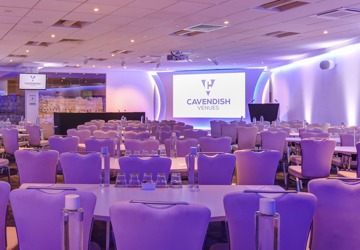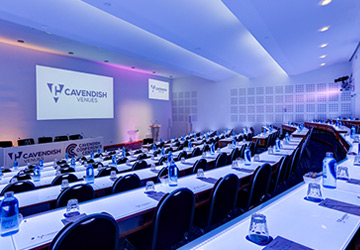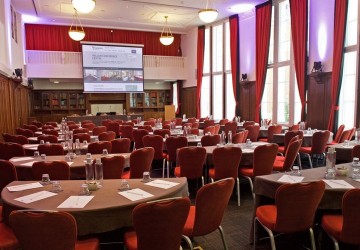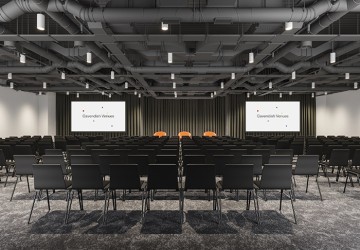How to get the media interested in Third Sector and Charity Events:
Why do you want media?
The key thing is that haveing the media in whatever from onside will help amplify your key messages and promote your event to a wider audience.
Coverage will increase the visibility of your event and in turn attendance. With dramatically reduced public sector spending, strong event attendance can be a vital source of revenue
Media coverage can also help add further legitimacy to your event, cause and even your organisation. In recent times there has been a decline in public trust towards charities making credibility more important that ever. People want to know more about how their money is spent and the real-world impact it has – events can be a great platform to showcase your work and address these concerns.
In summary, media coverage can help:
Increase number of volunteers
Raise profile for future events
Strengthen legitimacy
Thankfully, charitable causes are often popular with the press so with the right approach you should be able to secure the coverage you need.
Who are the media?
We exist in a world where the traditional media of print, tv and radio exist alongside the much more immediate and ever-expanding new media. The Internet and advent of social media has opened up numerous opportunities to connect with people in new ways. It’s important to consider all platforms when promoting your event.
– TV and Radio
– Print – Newspapers, Magazines, Newsletters
– Online – Magazines, Websites, Blogs, Vlogs, Social Media
Do we need a PR Agency?
When it comes to raising the profile of your organisation and publicising events, the most obvious choice is to hire a PR agency. However, agencies do not come cheap and the costs can be hard to justify for smaller third sector organisations.
The main benefit of professional PR agencies is their large network of contacts, especially those agencies specialising in Events. They also have experience executing every aspect of a media campaign – from writing Press Releases to generating Social Media buzz to securing Press Coverage. Having said that, there is much of what a PR agency does that you can replicate and do off your own back.
How to Get your Event Noticed by the Press
If you plan on utilising the media to publicise your event then it makes sense to start as early as possible and be strategic. This way you can ensure that you get everything done in time and that your efforts are rewarded. When it comes to strategy, your primary concerns are your messaging and identifying the people it needs to reach.
Target Audience
The main objective of Public Relations (PR) is matching your charity with those individuals, groups and organisations that can help you achieve your goals. These groups form your target audience. You should already know plenty about them and their behaviours but a useful exercise is to consider the media that they use – What publications do they read? Where do they spend time online? Which outlets do they trust? Where do they go for news? By doing this, you will know which media outlets to target in order to reach them.
Enhancing Your Own Story
Part of being strategic is being really clear on your messaging and having a compelling story about your organisation that is easy to understand.
Lists
As with so much of the advice we offer, it all begins with a good list. Having identified and researched your target audiences, you now need to make a list of all relevant media outlets, editorial contacts, journalists, influencers and bloggers.
Ensure your list is targeted to those that make most sense to your event and organisation as well as your target audience. Think about it on a national and local level. Once you have a list of target outlets, you then need to identify the journalists who have covered similar stories and events. This applies to all types of media outlet from television to newspapers.
Our focus is going to be on connecting with online and offline print journalists. One way you can do this is by doing a site search in Google. Type ‘site:www.mediapublication.co.uk’ into Google followed by a keyword such as ‘charity event’. Google will then search the site for relevant articles based on your keyword and return all those that are relevant. Once you’ve identified the journalists, you then need to find their contact details, ideally a phone number and an email address.
Finding Media Contacts
Another avenue for identifying journalists that cover third sector events and charity news is to use journalist database websites such as:
These allow you to search by topic and will then list all known contact details for journalists that fit your search.
Writing a Press Release for Charity Events
With your contact list now ready, you need to create a press release. A press release will contain all the key information about your event and organisation, in a format expected by editors and journalists. A good press release should get your event noticed and a story ran in your target publication.
The Layout
There are several different Press Release layouts but they all follow a similar format of:
Summaries
The Body
Notes to Editor
Contact Details
We will look at each section in turn and offer practical advice.
The Headline
Your headline is the most important aspect of your press release. It needs to grab attention and tell the story. It should be short, simple and to the point. Imagine your headline as a Tweet – is it short enough? does it tell the story? does it have impact?
Subheading
You can provide more context to your event in the subheading but you should still be trying to spark interest.
Summaries
Many Press Releases feature a very top line summary of all the key points in bullet form. This can be extremely useful for time-starved journos.
The Body
The body copy is where you provide all of the essential top line information about your event, why it’s important to your organisation and what makes it different. Ideally, you should structure and write the body section to resemble an article in your target publication. By doing this, you minimise the effort required to make it publishable.
First Paragraph – All press releases, just like articles, answer the same basic questions: Who? What? Where? Why? When? These questions should all be answered in one or two to-the-point sentences within the first paragraph. You should also push the angle that makes your event newsworthy – why should people care about it? The first paragraph is crucial to the overall success of the press release so it’s worth spending time on getting it right.
Second Paragraph – In the second paragraph, you can provide more details about your event and explain what the outcome of the event will mean to your organisation as well as any compelling details that will encourage people to attend.
Quotes – In the body of your press release you will also want to include one or two carefully chosen quotes. Get a quote from the event organiser and/or someone involved in your charity or organisation to provide context and insight.
Additional Paragraphs – You should try and keep your press release short and to the point – one A4 page is ideal. If you do include additional paragraphs, they can provide additional information about the event and how it relates to your organisation’s goals. You will also want to recap all the details of the event – where and when it will take place, where readers can purchase tickets and where they can find out more. Alternatively, you can use a ‘notes to editors’ section…
Notes to Editors – In this section you can provide more information about your organisation, your story and the causes you support and how. These can include statistics too. You should also include your website address and social media account profiles in this section.
Contact Information – At the end of your press release, you should provide your contact details. This should include your email address and phone number where you can be reached.
Further Advice on Writing Press Releases
Guardian on How to Write an Effective Press Release
Journalism.co.uk on Writing the Perfect Press Release
Making Contact
When it comes to contacting journalists, you want to make it as personal and as direct as possible – not always an easy task. Gather as much information as you can about the journalist or editor prior to contacting them so that you can hit them with the most compelling angle.
When it comes to your high priority publications, contact them personally, ideally over the phone. You need them to understand the interest and newsworthy nature of your event so practice conveying this in a short and compelling way. When speaking to them, confirm that the story is relevant to them and not someone else’s area as well as finding out the deadline for Press Releases.
Whether via email or phone, you should start by introducing yourself and the charity/cause.
For those journalists that you don’t have the time to contact via phone, send them your Press Release as a PDF as well as a summary in the body of the email. Still take the time to show that you understand their publication and the audience they serve in a line or two in the email. If you don’t receive any replies from those publications you contacted via email then follow up with a quick call.
Things to Be Aware Of When Contacting Journalists
Deadlines – Find out what deadlines they will be working to so that you can ensure your Press Release reaches them at the right time. You will also want to avoid contacting them in the immediate run up to a deadline.
Huge Inboxes – Journalists get inundated with hundreds of emails everyday so make sure yours is easily identifiable as a Press Release and that your subject headline compels them to open it.
Speak their Language – Journalists will be interested in what makes your event interesting to their readers and newsworthy. The angle that you pitch will have to work for the publication or else they won’t consider it.
Interviews – If the journalist wants to make a longer piece out of your event or wants an original quote then they will want to carry out an interview. Create a list of potential interviewees within your organisation (check with them first) that will be available to be interviewed if required.
Using Social Media
Any conversation around media now includes Social Media. Social media is a powerful tool for all third sector organisations. The various platforms can be used to build and engage with communities that support the work you do. This can be through donations and volunteering but also by amplifying your messages and increasing your reach online.
Social media allows you to promote your event and get people, including those in the media, to find and notice you. Your community can be particularly beneficial when it comes to creating a buzz around your event. Journalists are much more likely to take notice if there are already conversations around the event on Twitter.
You should take note of your social media supporters – those that regularly retweet you, join in conversations and publicise your events – these people are key to your online community. If treated well and acknowledged, they will help raise the exposure of your event and organisation. Take the time to thank them directly on social media.
When it comes to using social media, you should be weary about simply pushing out the details of your event. Engage with your communities – this means replying to tweets, starting conversations, retweeting other relevant people and organisations. As well as this you should use social media to let people know about the causes you support and the work you do. You can remind people about the real world impact that you can achieve with their support.
Hopefully, your event will have been a runaway success. With media coverage, it will have been widely attended by those people key to your organisation’s continued success. So what happens now?
Well, you have the opportunity to follow up with a post event press release. This will include quotes from attendees, any photographs from the event and a summary of the money raised. You can send this out to those publications that featured your event along with a nice thank you. If they gave you coverage, be sure to comment specifically on it.
Central London Venue for Third Sector
At Cavendish Venues we offer special rates to third sector and not for profit organisations. . Enquire today and we’ll be more than happy to show you around and help you achieve great things with your next event. Email us on enquiries@cavendishvenues or call us on 0207 706 7700
Bookings & Enquiries
Whether you need help planning your event, have a question about one of our venues or want to make a booking, our friendly Venues Team are here to help.
+44 (0)20 7706 7700
Why Cavendish?
At Cavendish Venues we are committed to exceeding your expectations, and with over 93% repeat business we know we're doing something right!



